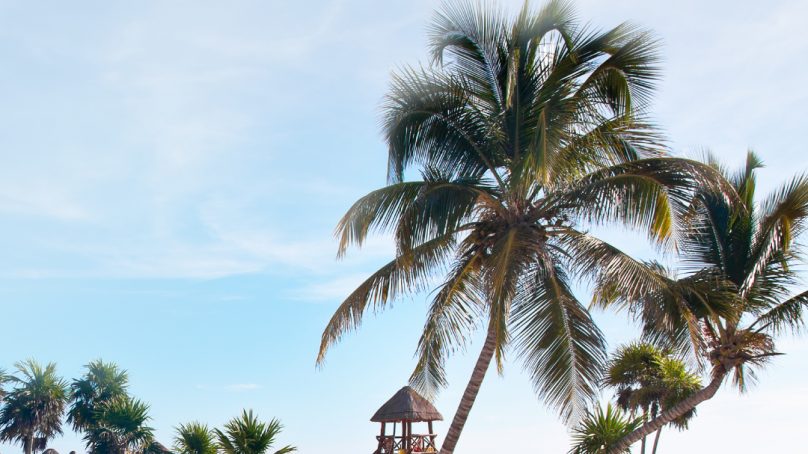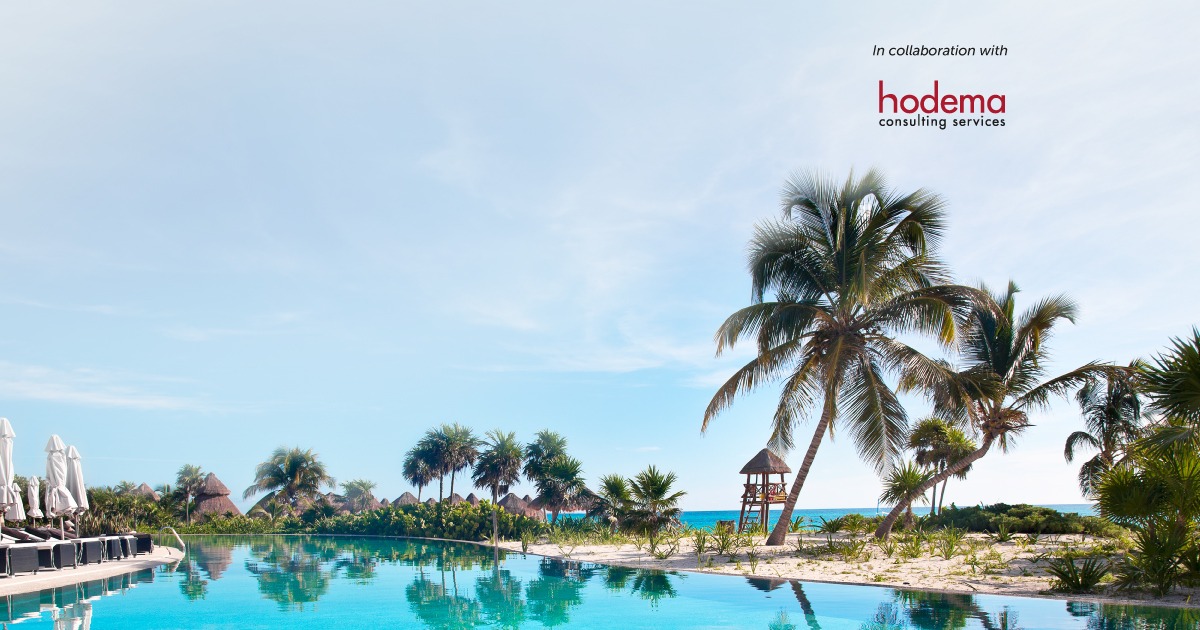

With the Covid-19 pandemic largely behind us, the lifting of restrictions has made travel easier in most countries. Big cities, such as New York, Paris or Rome, have returned to their frenetic former selves, with people once again queuing for hours outside museums and fancy restaurants. But it’s another story for resorts, which have been hit the hardest by the sudden interruption of mass tourism.
Back in the mid-eighties, we witnessed a rise in large touristic resorts by the beach or in the mountains. This concept traveled from the U.S. to the Mediterranean, Egypt and Asia, as well as its secluded islands. Developers sold their dream all-inclusive holidays through travel agencies, with leaflets featuring idyllic hotels. They even partnered with airlines to promote popular hot spots. For many, package holidays opened the door to exotic destinations.
Scarred but not broken
The pandemic halted everything; resorts had to close at once. While some countries provided financial support to help establishments stay afloat, properties elsewhere had to let go of their staff and even close down permanently. The spacious premises of most resorts — previously considered a strength — became a weak spot, as maintenance was required, even in the absence of visitors.
New travel habits
Now that the sector is in recovery mode, how are the resorts faring? Many people rushed to the mountains as soon as snow fell this winter, and most resorts were sold out until spring. Places on the coast also witnessed a bright spell, although some were left out due to excess supply.
Indeed, the pandemic deeply scarred the sector; the side effects can still be felt today. Besides financial hurdles, the pandemic has shifted consumers’ preferences when it comes to traveling. After staying at home for so long, many holidaymakers are now choosing shorter trips, allowing them to support the local industry. Some travelers also have a more environmentally friendly attitude, while others, who are wary of crowds, are opting for smaller tailor-made holiday packages. With these new attitudes and trends, coupled with rampant inflation, resorts need to adapt if they wish to continue seeing crowds of visitors.
However, the healing has to be adjusted. The high-end sector is shaped by global groups, which have been anticipating new trends for a while. Marriott, Hilton, Four Seasons, Ritz-Carlton and Hyatt have been developing luxury experiences for their clients far from packed charter flights. They have understood the need for a more responsible approach to hospitality and thus offer curated activities for adventure-seeking guests. Some hotels are gravitating toward locally sourced food (Four Seasons Resort Los Cabos at Costa Palmas in Mexico even grows its own ingredients), while others are promoting “responsible” architecture that respects nature and local artisanship (such as the Salt Palace in Potosi, Bolivia; or the Amanruya Hotel in Mandalya Bay, Turkey).
In the Middle East, the current hospitality trend to move away from oil comes at the right time to ride the wave of hospitality change. Some avant-gardist establishments include Six Senses’ Zighy Bay in Oman and the eco-lodge Adrère Amellal in Egypt’s Sahara. More traditional properties include Sofitel’s Old Cataract in Aswan.
But the main hot spot for resorts in Egypt is Sharm El-Sheikh, where lavish complexes rub shoulders with lower-end establishments. Specialized search engines feature dozens of independent resorts, with rooms starting at just USD 17. This lower-end segment has also attracted larger hotel groups, such as Radisson Individuals by Radisson. The popular destination has witnessed countless ups and downs over the years, with a dramatic low in 2015 due to insecurity. it is now trying to make up for the loss of Russian and Ukrainian tourists by attracting visitors from the Middle East.
Best practice on a large scale
In the region’s other markets, Saudi Arabia’s ambitious Red Sea project will be unveiling eco-friendly resorts spread across an archipelago of more than 90 islands. The towns of Amaala, Qiddiya and Diriyah (home of the Al-Ula heritage site) have been selected to host scores of new hospitality projects. The kingdom’s touristic grand scheme even covers a larger spectrum of resorts; besides beach and historical sites, a ski resort is planned for 2026 in the Sarawat Mountains. Despite the current lull, which sees visitors resuming familiar holiday habits, resorts should brace themselves for further turbulence in the long term. Inflation is here to stay, and new ways of traveling are reshaping the industry toward regenerative tourism. They will need to target a more local audience and implement best practices on a large scale to survive the predicted slow death of mass tourism as we know it.

Nagi Morkos
Managing Partner
Hodema

















